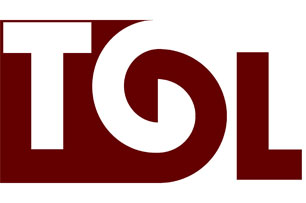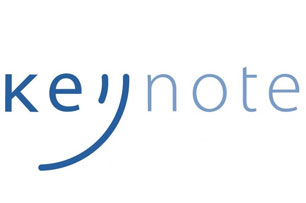Documents
On Putin’s Propaganda Success in Europe: Disclosing and Fighting the Disinformation Campaigns in the Media
On May 30, 2015 Prague Media Point, a joint KEYNOTE and Transitions (TOL) project in partnership with Prague Press Forum, organized a closed pre-conference discussion titled “On Putin’s Propaganda Success in Europe,” which brought together journalists, academics, and politicians with an aim to share knowledge on the range, methods, and impact of Kremlin-initiated or -inspired propaganda in Europe. The following text is a summary of the discussion.
Overview of Recent Reports
To open the discussion, moderator Jeremy Druker, TOL’s executive director, pointed out the increased attention the issue has received lately from experts, saying that there was “so much talk in years, but very few attempts to thoroughly map things out. Finally reports are coming out.” Four recent documents received particular mention.
A paper titled The Pro-Russian Disinformation Campaign in the Czech Republic and Slovakia by Ivana Smoleňová, released by the Prague Security Studies Institute, provides an overview of the disinformation campaigns in the Czech Republic and Slovakia. After closely analyzing four sources (three publications and one public event), Smoleňová finds a common narrative with shared claims and arguments put forward by a wide range of sources (such as that Russian websites, informal groups and communities on social media, several printed periodicals, radio broadcasts, and non-governmental organizations, as well as social media and public gatherings). She warns that Russia’s strategy changes from country to country, making use of local “weaknesses.” Her findings show that the disinformation campaigns in the Czech Republic and Slovakia are systematically working to confuse citizens about the war in Ukraine, shift public opinion against NATO, the EU, and the USA, and create a sense of danger. In addition, they are working to undermine trust in democracy, political institutions, and the media. In her recommendations she puts emphasis on exposing propaganda campaigns and working with the public by raising awareness about how these types of disinformation work.
A special report prepared by Peter Pomerantsev and Michael Weiss for the Institute of Modern Russia in 2014 offers a complex analysis of how the Kremlin uses not only information, but also culture and money as weapons in the hybrid war. On the case of Ukraine, the authors show how Russia has been redefining warfare in the 21st century. With the use of lies and staged news spread by Russian TV, social media, and print media, the Kremlin “managed to create a parallel reality,” which helped to shape public opinion on the conflict and legitimacy of Russian invasion in Ukraine. This campaign was aimed not only at Russians and Russian-speaking Ukrainians, but also at international audiences including politicians. In addition to explaining how the Kremlin propaganda works and what tools it uses, Pomerantsev and Weiss offer a series of recommendations that are preceded by defining the weak spots of the West that the Kremlin propaganda makes use of. These range from what can be called the crisis of Western media to the lack of transparency in the funding of think tanks. The recommendations emphasize countering the disinformation and focusing on the audiences exposed to disinformation campaigns and also re-establishing integrity as an important societal value.
Content analysis of Russian TV channels conducted by a Slovak media monitoring NGO called
Memo98 focuses on “evaluat[ing] the level of political diversity in their news coverage of various international and local topics.” Since television remains as the main source of political news for approximately 80 per cent of people in all six Eastern Partnership (EaP) states, the role of Russian TV channels in the media markets and regulatory framework for foreign broadcasters in the EaP countries are examined. The results show that the credibility of Russian TV channels, and thus potential impact of propaganda on public opinion, is much higher in those countries, where these channels are importantplayers in the media sphere (Armenia, Belarus, Moldovia) than in those where their role is limited.
Limited broadcasting options (Georgia and Azerbaijan) and regulation by the government (Ukraine) mean that alternative reporting offered by local media have higher potential audience. Finally, a major report titled Russian Language Media Initiatives in the Eastern Partnership and Beyond was presented by the European Endowment Fund at the summit of EaP countries in Riga in May 2015. The report, which reflects the work of over 90 media experts, has not yet been made public, but its main preliminary recommendations were shared with the public and include the following: (1) a pan-regional news hub to exchange news material among leading Russian language media; (2) a regional content production center, a content factory; (3) a media excellence center for the coordination of audience research and training, focusing on market research and business planning – skills that are often lacking in the region; (4) a multi-donor basket fund, which would provide long-term demand-driven support to Russian language media initiatives and their partnerships; (5) a coordination mechanism for these four initiatives to avoid duplication of initiatives and to fill existing gaps.
Defining Weaknesses of Western Media
The discussion further reflected on both the weaknesses of the West and ways to counter the propaganda. In the context of the Czech Republic, one of the participants noted that the propaganda has not yet taken roots in society, but has been successful in creating a general sense of mistrust in local and Western media. That goes hand in hand with the fact that several media houses are owned by powerful businessmen and politicians. This trend, which can be observed in several European countries, enhances the feeling among audiences that media cannot be trusted because the owner might promote his or her views. The quality of media also makes the spread of propaganda easier: “RT is not a Russian invention, just a version of FOX news and it is effective because we lack the media that could confront it,” said one participant.
Finding Solutions
When looking for ways to expose and counter Russian propaganda, “we have to separate between propaganda in the Russian-speaking world and in the West,” said one participant. Within the Russian-speaking world there is the issue of little access to Russian-language news and TV programs not produced by Russian TV. Therefore, especially within the EU, there has been much talk of supporting good Russian speaking journalism, for example by creating a new media center. Nonetheless, the question seems to be whether there is enough political will to finance a project that, in order to effectively target a wide audience, would be very costly. Others suggested that since the Russian disinformation efforts are not only prevalent in the news reporting but also into a variety of entertainment programs on television, which reach a wider audience, “a new entertainment channel has to come before a news channel.”
Let us kindly invite you to the second edition of Prague Media Point:
“Populism, authoritarianism and the media: The age of mediocracy and mediocracy” November 12–14, 2015, New York University Prague.
The Call for Papers in opened until June 29, 2015.
 Education
Education



